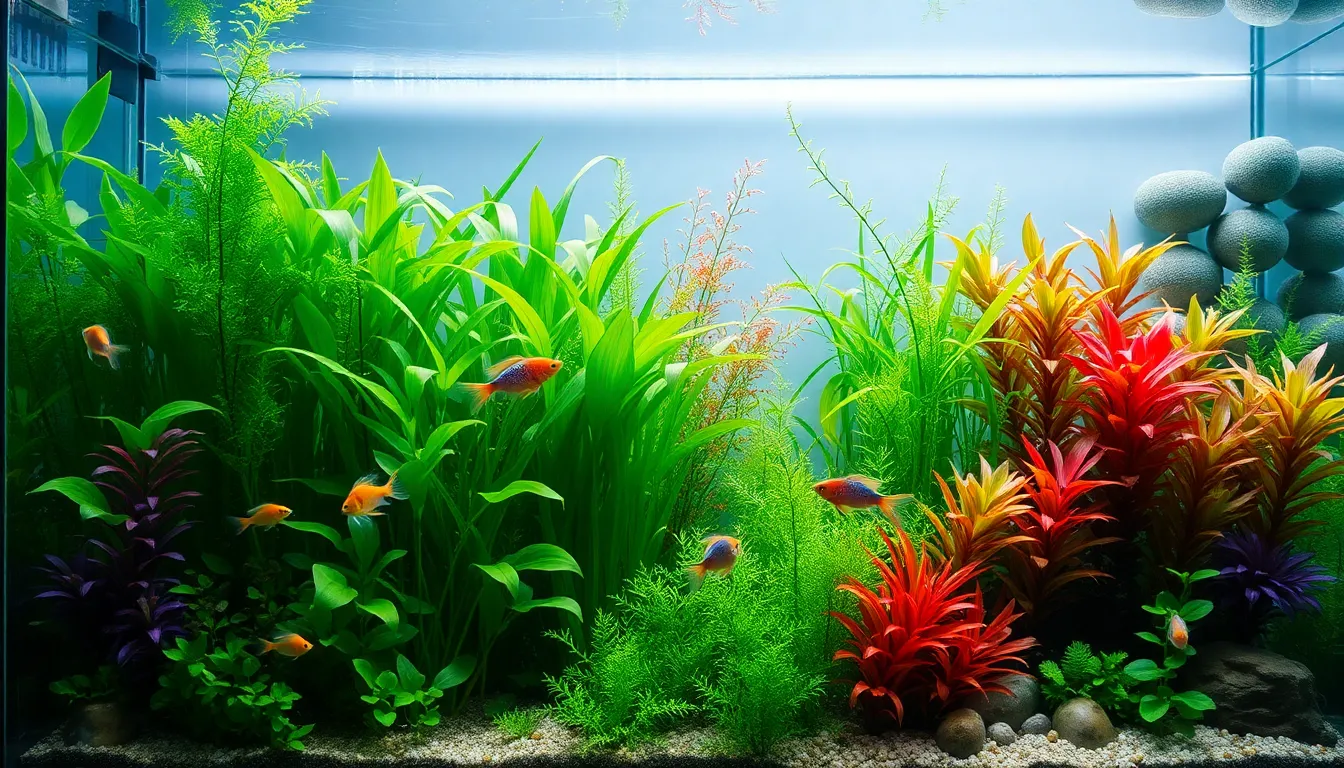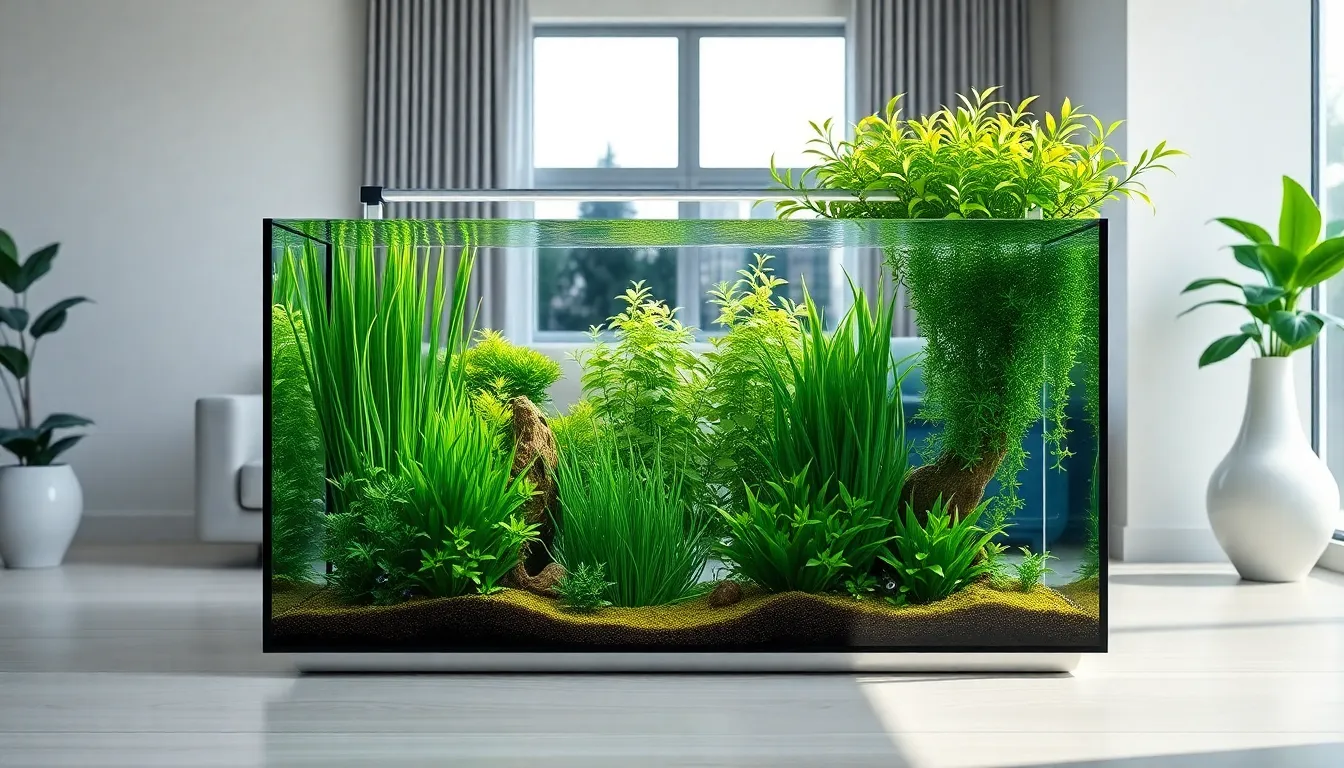Imagine diving into a vibrant underwater world every day, right from your living room. Sounds dreamy, doesn’t it? What if the secret to achieving that serenity lies in choosing the right aquatic aquarium plants? Not only do these green gems enhance the beauty of your tank, but they also provide essential benefits like improved water quality and ecosystem balance. Let’s explore why aquatic aquarium plants are the superheroes of your aquarium setup, giving you that splash of charm and a whole lot of life.
Aquatic Aquarium Plants

Benefits of Live Plants in Aquariums
Aquatic plants are more than just a pretty face in your aquarium: they serve multiple purposes that elevate the aquatic environment. Live plants produce oxygen, as they perform photosynthesis, benefiting not just themselves but the fish and other organisms sharing the water. Imagine your fish swimming in a vibrant, oxygen-rich habitat, what a delightful sight.
Enhancing Aesthetics and Environment
A well-planted aquarium can resemble a miniature underwater jungle. Picture lush greenery swaying gently with the water currents. This not only adds visual appeal but also provides hiding spots and shelter for shy fish. Also, live plants contribute a natural feel to any setup, transporting viewers to serene ocean depths.
Improving Water Quality and Ecosystem Balance
Equally important is the role aquatic plants play in maintaining water quality. They absorb harmful substances like nitrates and phosphates, turning your aquarium into a paradise for both flora and fauna. The plants essentially act as natural filters, enhancing the overall stability of the aquatic ecosystem.
Popular Types of Aquatic Plants for Aquariums
Foreground Plants: Low-Growth Options
When it comes to foreground plants, think low and stunning. Species like Dwarf Hairgrass and Java Moss not only create a lush carpet look but also provide an excellent base for other plants to flourish. These low-growing beauties ensure the tank maintains visual depth without overshadowing taller species.
Midground Plants: Versatile Choices
As we explore midground plants, the options become even more intriguing. Anubias and Java Fern are popular options for their adaptability. They thrive in various light conditions and can attach themselves to rocks or driftwood, adding layers and textures to the aquarium layout, regardless of the desired theme.
Background Plants: Tall and Imposing Species
In the upper echelon of the plant hierarchy, we find background species like Amazon Sword and Vallisneria. Their tall stature creates a striking backdrop, drawing the viewer’s eye and providing ample oxygenation from the top down. These plants can anchor your aquarium, giving it a lush, completed look.
How to Care for Aquatic Aquarium Plants
Light Requirements for Healthy Growth
Light is the lifeblood of aquatic plants. Understanding the right light requirements is crucial for fostering growth. Generally, most plants thrive in moderate to high lighting: but, be sure to research specific needs based on the species you choose. Bright, indirect light often yields the best results, ensuring your green friends flourish without becoming overwhelmed.
Nutrient Needs and Fertilization
Like our beloved pets, aquatic plants require their share of nutrition. This includes essential nutrients like nitrogen, potassium, and phosphorus. A good-quality aquatic fertilizer helps provide the necessary support, promoting vibrant growth and keeping those pesky algae at bay. A balanced approach is key: too much fertilizer can wreak havoc, drawing more algae than beneficial growth.
Pruning and Maintenance Tips
Don’t let the term ‘pruning’ scare you. Regular maintenance keeps your plants healthy. Snip away any dead leaves and trim overgrown sections periodically. This not only keeps your aquarium looking tidy but also encourages new growth. Trust me, your plants will thank you for the care.
Common Challenges and Solutions
Algae Control in Planted Aquariums
Ah, the age-old battle with algae. It can sneak up and become a nuisance, but fear not. Regular maintenance, proper lighting, and balanced nutrient levels can help keep algae at bay. Incorporating algae-eating fish like Otocinclus can also aid in managing the situation, ensuring your plants have the space to thrive without the green intruder.
Pests and Diseases: Prevention and Treatment
Sometimes, even though best efforts, pests find their way into your aquarium. Aphids and snails can pose challenges but can often be managed through careful observation and quick action. Regularly inspecting plants before adding them to your tank can help in preventing diseases and infestations. Quarantine new greenery if unsure, allowing you to nip potential problems in the bud.
Integrating Fish with Aquatic Plants
Choosing Fish That Coexist Well with Plants
Selecting the right fish is crucial to maintaining harmony in your aquatic ecosystem. Peaceful fish like Neon Tetras and Guppies make excellent tank mates. Their small size and non-aggressive behavior allow them to coexist comfortably with the plants without causing disruption.
Creating a Balanced Ecosystem
Integrating plants and fish creates a delicate balance. Strive for a mix of both, ensuring adequate swimming space for fish while providing ample coverage for plants. This diversity not only enhances the visual appeal but also contributes to a thriving, vibrant ecosystem chatters with life.

